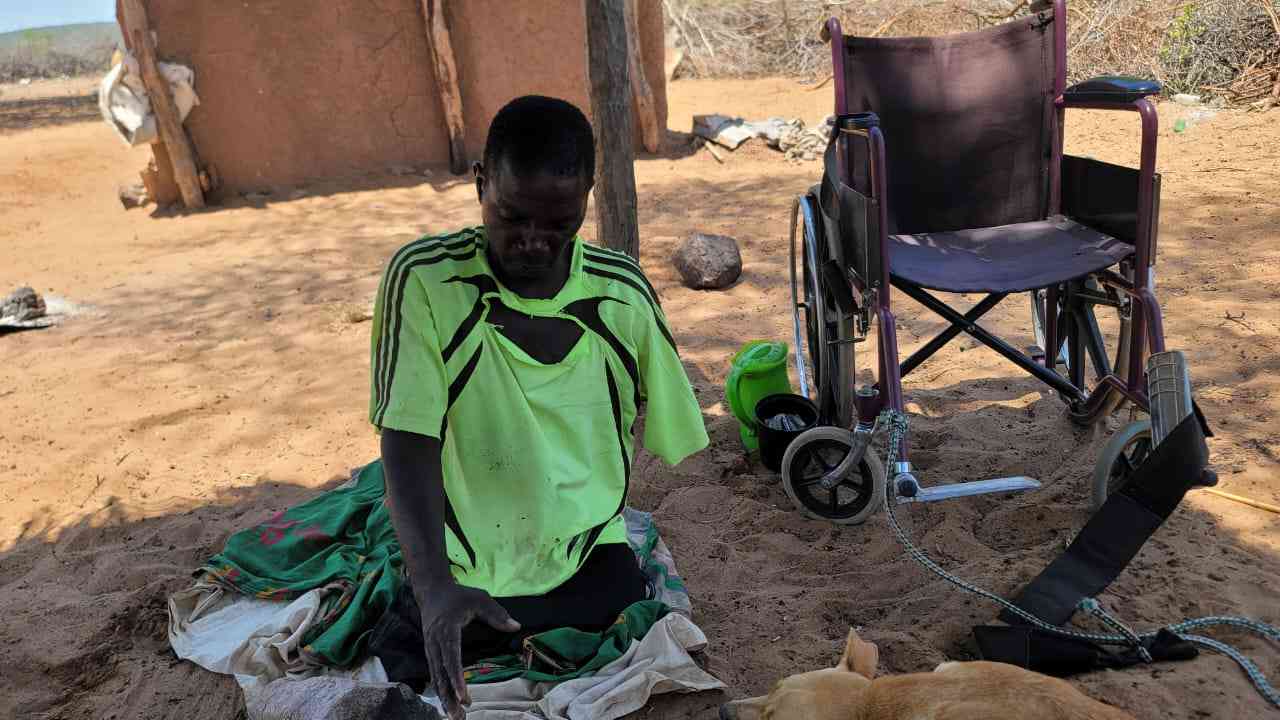
The unrelenting sun beats down on sixty-five-year-old Constance Ndaba as she casts a hopeful glance towards a large white jar tank brimming with water.
Normally, March wouldn't feel like a scorching October, but heatwaves are gripping the country, sucking the moisture from the earth.
Previously, a two-kilometre trek awaited her to the nearest borehole after the one near her home dried up.
“Extreme temperatures since last year have parched my usual borehole (sic),” Ndaba said while collecting a bucketful from a tap behind her bedroom hut.
“Unpredictable rains are making the future uncertain, but I'm grateful for this solution that will make a big difference.”
Rainfall patterns in Zimbabwe were once predictable and reliable.
Now, long, dry spells are plaguing the land, leaving people questioning when the rains will return. Water scarcity intensifies as climate change tightens its grip on the country.
“The once-perennial Gwayi River flowed year-round,” Ndaba recalled. “Human-wildlife conflict over water was rare. Now, everything's changed.”
- Plight of degraded soils during climate change
- Climate change’s burden on poverty and inequality
- El Nino: Spare a thought for rural poor
- Climate-induced drought firmly upon us, possible lessons for future preparedness
Keep Reading
Most rural Zimbabweans are facing acute water shortages for both domestic use and agriculture.
El Niño-induced droughts, overreliance on aid, and inadequate government water infrastructure are worsening rural poverty.
El Niño, a warming of the sea surface, brings drought conditions prevalent in Zimbabwe, impacting crops and water sources. Climate change, with its extended droughts, floods, and heat spells, is considered the biggest threat to humanity.
Zimbabwe, like many African nations, is grappling with the effects of climate change.
The Harare administration is struggling to develop coping mechanisms, often requiring significant funding. Communities in Hwange, Matebeleland North province, haven't been spared.
The arid district receives little rain, making its poor soils unsuitable for agriculture. The 2022 Zimbabwe vulnerability assessment report classifies Hwange as food insecure.
Villagers are struggling for potable water, often walking long distances as traditional waterholes and boreholes have dried up due to climate change.
Heat stress, another consequence, is harming the health and livelihoods of vulnerable groups like women and children.
Mabale ward is particularly affected.
The semi-arid area experiences high runoff, preventing rainwater from soaking into the ground.
Here, the community has found a solution: rainwater harvesting. During the rainy season, a simple system of large jars captures the rainwater.
Villagers in Mabale are employing rainwater harvesting to combat flooding and drought worsened by climate change. Rainwater harvesting, an alternative clean water source, involves installing catchment systems at homes and shared spaces.
Privilege Tembo, a local woman, sees hope in rainwater harvesting. She highlighted how it empowered women in her community.
"When our tanks are full," she explained, "we also use drums to collect rainwater for use in watering our nutrition gardens which helps in supplementing our food.
“We are able to support our families from the income that is generated by sales from our garden produce."
Environmentalist Daniel Sithole of Green Shango Trust also believes rainwater harvesting is crucial.
"The attainment of the Sustainable Development Goals (SDGs) largely depends on the availability of water," he explained. "Rainwater harvesting can be used to reduce the economic effects to sustainability, in addition to its environmental benefits."
These tanks are a lifesaver, according to beneficiaries.
"They've transformed our lives," said Ndaba, a beneficiary of the project spearheaded by Softfoot Alliance.
"We used to walk kilometers for water after our boreholes dried up due to extreme temperatures lowering the water table."
Rainwater harvesting systems not only provide an alternative water source during droughts but also act as adaptation measures, reducing climate change vulnerability.
Studies show a potential 30% reduction in water usage during the rainy season. The benefits of rainwater utilisation increase with storage tanks.
Rainwater harvesting is gaining traction as a viable strategy to overcome rainfall variability caused by climate change in Zimbabwe's semi-arid regions.
Masikili village head, Hlomani Dingani, reported immense benefits for the community, with roughly 100 households now utilizing rainwater harvesting.
"The program began in 2018 after villagers noticed significant water loss through runoff," Dingani explained.
"With NGO assistance, we built jar tanks to preserve water for later use, as this area faces water shortages.
“We use the water for domestic needs and for watering our gardens.
“We've also seen many boreholes drying up, and these tanks have significantly reduced the distance people need to walk to get water."
The harvested rainwater is stored in closed tanks, protecting it from contamination during floods. Additionally, using collected rainwater during the wet season allows wells to recharge, ensuring water availability during the dry season.
"This jar tank holds as much as 17 drums of water," said Ndaba.
"Used sparingly, this water can last me several months. I no longer have to endure the long walk to fetch water. I'm glad this intervention is helping not only the elderly but the entire community."
Women in Hwange, traditionally responsible for fetching water, are finding relief thanks to rainwater harvesting. "It's a huge help," said Annacleta Moyo.
Previously, they walked long distances, especially during dry periods when boreholes dried up.
“Now, a full 5,300-litre tank can provide water for up to six months, allowing Moyo to wash, cook, and drink at home.
"Climate change is causing water shortages, and this makes a big difference," she added.
Despite the hope offered by rainwater harvesting, significant challenges persist. Poor communities are most vulnerable to climate change impacts, facing difficulties accessing clean water and public facilities.
Left with limited options, some are forced to use unsafe sources.
*This report was produced by the Citizen Bulletin in partnership with Report For The World.









